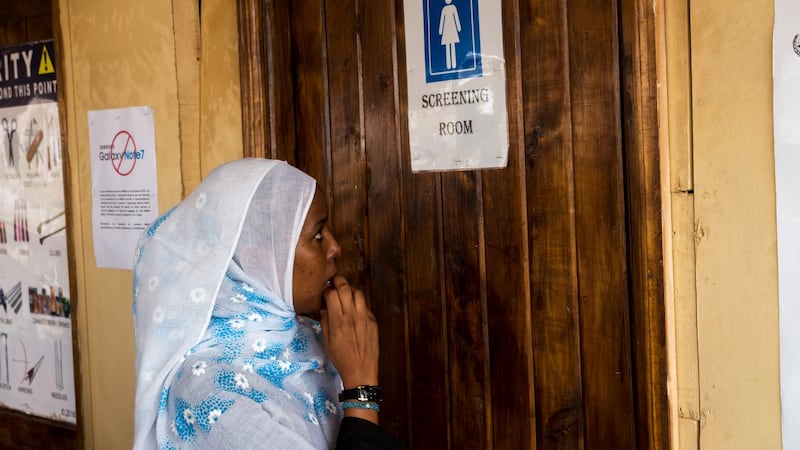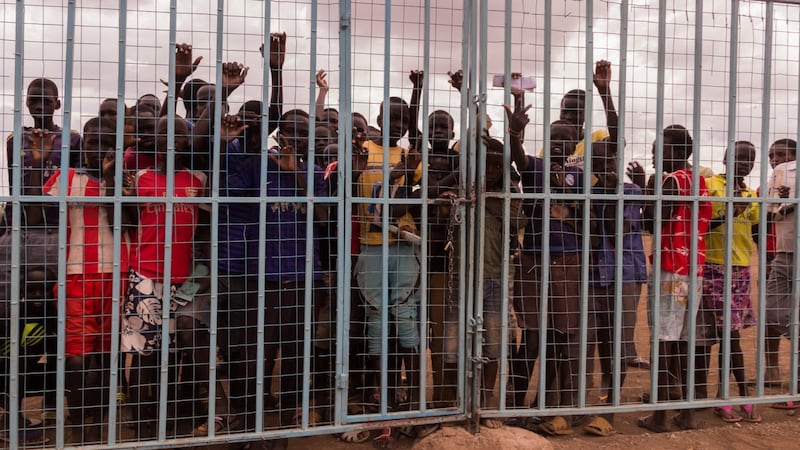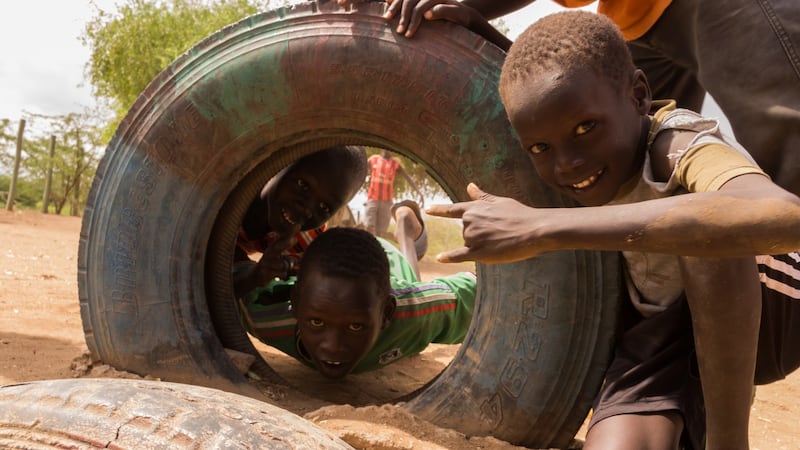"California, Utah, Nevada, New Mexico. " Libin lists the states over a plate of injera bread inside an Ethiopian restaurant, growing more excited as she names the places she would like to visit when she moves to her new home in Phoenix, Arizona.
At 22 Libin has lived in Kakuma refugee camp in northern Kenya for almost two decades. She was born in Nairobi's Eastleigh district and has never seen Somalia, which is officially her home. Now, after securing a resettlement, she will see the US first.
She's looking forward to other things, too – her first slice of pizza and a Spanish-speaking boyfriend, a comment that prompts a joking reminder from her friend Andrew about what Donald Trump said about Mexican immigrants.

Andrew, now in his 30s, is one of the original Lost Boys of Sudan, for whom the camp was established. He fled civil war in the late 1980s, first to Ethiopia, then to Kenya following the collapse of the Mengistu regime, and Kakuma has been his home ever since. Like Libin, he was supposed to be resettled to the US, an offer withdrawn due to post-9/11 security concerns. He now works with FilmAid, teaching young people to make documentaries and music videos, and also edits a community newsletter.
Libin chooses to remain upbeat despite Trump’s tough stance on refugees, though she has been advised by immigration officials not to return to Kenya until she becomes a naturalised citizen, which means she will not see her mother for at least five years.

For most young refugees here, resettlement – usually to the US, Canada or Australia – is the only future they can imagine. Job opportunities in the camp are extremely limited, with only the lucky finding odd jobs or occasional work in a relative's shop. Work with NGOs is highly prized, but often requires a third-level education, an impossibility for many, and payment for refugees is significantly lower than what Kenyan citizens receive.
No place like home
Among the almost 200,000 refugees in Kakuma, the prospect of a new and permanent home is a constant topic of discussion. Families, friends and neighbours give each other frequent updates on their “process” and keep in close contact with those who have already left.
The procedure begins with profiling by the UN High Commissioner for Refugees, which then sends the case to potential host countries. Then a national resettlement body will request a series of interviews with the refugee or refugee family. Should the case be approved, the Institute of Migration will then assist with logistics and offer an interest-free loan to purchase the plane ticket. Upon arrival, refugees will be offered accommodation, financial aid and vocational support, usually for several months.

In practice, the process is often Byzantine and opaque. Months and years can go by without updates, interviews can be adversarial and traumatic, and rejection notices do not always offer much explanation. One man shows a statement saying there were inconsistencies between his interviews, which were held months apart. Years later, despite many requests, he still hasn’t been told what they were.
There is a widespread perception that those with money have undue luck in being resettled quickly
Corruption and bribery are relatively common too and there is a widespread perception that those with money have undue luck in being resettled quickly.
"As long as I stay here I don't have another option . . . I am now in a process to the United States, " says Mohammed, a 25-year-old Somali refugee who tutors students in science and maths. He has applied for resettlement along with his family of eight, but has made little progress in the last 10 years.
“We have tried to communicate with the embassy but they told us they cannot estimate the time it will take,” he says. “Then we wait.”
He plans to pursue third-level education in the US and return to open a private business school. "My plan is to invest in Africa, though I don't know how long it will take," he says.
Left behind
There is a palpable sense of being left behind or forgotten for those who remain in Kakuma, which only increases as years pass by. Young refugees frequently compare the camp to a prison.
Pacing between a few plastic garden chairs outside his home, Abdirahman (19) makes a forlorn gesture towards nearby homes, saying all his neighbours have been resettled. Initially he kept in touch with friends in the US through social media, but found it a burdensome reminder of his own inability to leave.
“If someone is staying there enjoying their lives, then if you see his pictures you get frustrated,” he says. “You just feel like to go there . . . After one year or six months your desk mate will go to US. Another new person will join you. It feels very hard sometimes, you get frustrated.”

On leaving day, Libin carries her bulging suitcases towards a bus filled with other US-bound refugees. She has spent the last few days packing, preparing and saying goodbye to friends and family. When she finds her feet in her new home, she plans to become active in fundraising and spread awareness about the peers she leaves behind. “I feel I’m representing them, these young people who are desperate in the camp. I am a youth from Kakuma.
“I’m not going there as a refugee, not giving, I’m going there as a young person, studying hard . . . working, paying tax, everything, contributing to the American society. That’s what I’m going to do.”
For those who remain in the camp, the planes passing overhead are a tangled symbol of hope and despair
By a dusty airstrip in Kakuma town, Libin gives her goodbyes to friends through a mesh fence before passing through security inside a miniature departures terminal. She speaks to one father, his three young children scrambling around the benches in excitement. He explains that after years of waiting for his ticket, he lost his wife only a few months earlier.
For those who remain in the camp, especially those too young to have known another life, the planes passing overhead are a tangled symbol of hope and despair. They are well used to waiting – for food and firewood rations, for water and medical treatment – but yet more painful is the long wait for a decent existence they know Kakuma can never provide them.
Part 1 of 2 articles.
- Supported by the Simon Cumbers Media Fund



















